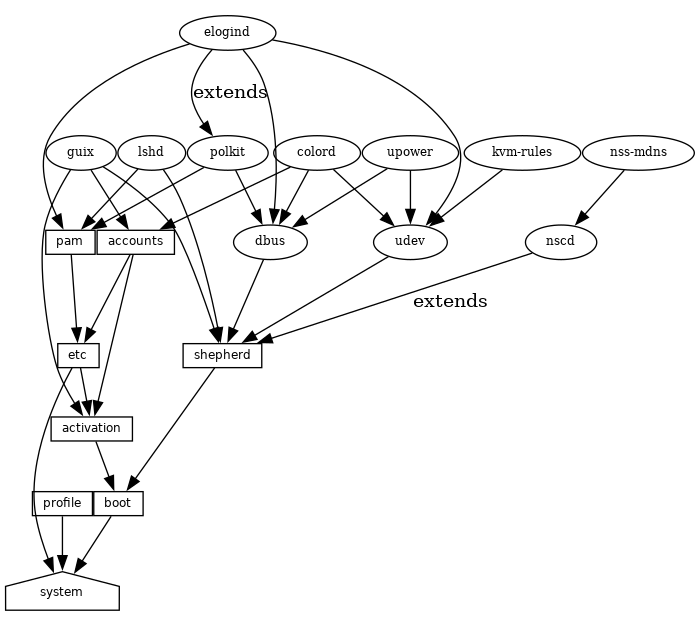Next: Типы сервисов и сервисы, Up: Создание служб [Contents][Index]
11.19.1 Структура сервисов
Here we define a service as, broadly, something that extends the
functionality of the operating system. Often a service is a process—a
daemon—started when the system boots: a secure shell server, a Web
server, the Guix build daemon, etc. Sometimes a service is a daemon whose
execution can be triggered by another daemon—e.g., an FTP server started
by inetd or a D-Bus service activated by dbus-daemon.
Occasionally, a service does not map to a daemon. For instance, the
“account” service collects user accounts and makes sure they exist when
the system runs; the “udev” service collects device management rules and
makes them available to the eudev daemon; the /etc service populates
the /etc directory of the system.
Guix system services are connected by extensions. For instance, the
secure shell service extends the Shepherd—the initialization
system, running as PID 1—by giving it the command lines to start and
stop the secure shell daemon (see openssh-service-type); the UPower service extends the D-Bus service
by passing it its .service specification, and extends the udev
service by passing it device management rules (see upower-service); the Guix daemon service extends the Shepherd by
passing it the command lines to start and stop the daemon, and extends the
account service by passing it a list of required build user accounts
(see Базовые службы).
All in all, services and their “extends” relations form a directed acyclic graph (DAG). If we represent services as boxes and extensions as arrows, a typical system might provide something like this:

At the bottom, we see the system service, which produces the directory
containing everything to run and boot the system, as returned by the
guix system build command. See Интерфейс сервиса, to learn
about the other service types shown here. See the
guix system extension-graph command, for information on how to
generate this representation for a particular operating system definition.
Technically, developers can define service types to express these
relations. There can be any number of services of a given type on the
system—for instance, a system running two instances of the GNU secure
shell server (lsh) has two instances of lsh-service-type, with
different parameters.
The following section describes the programming interface for service types and services.